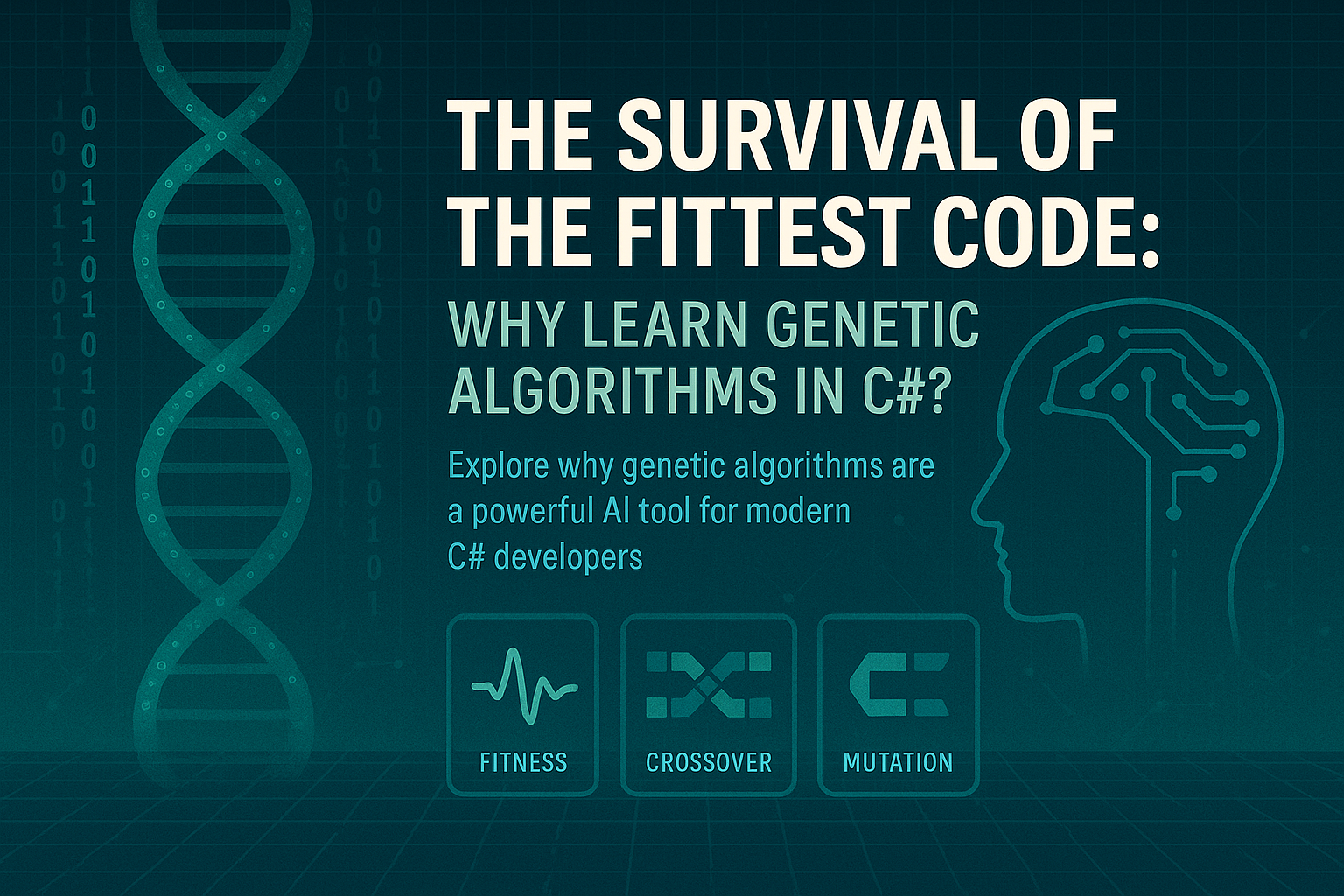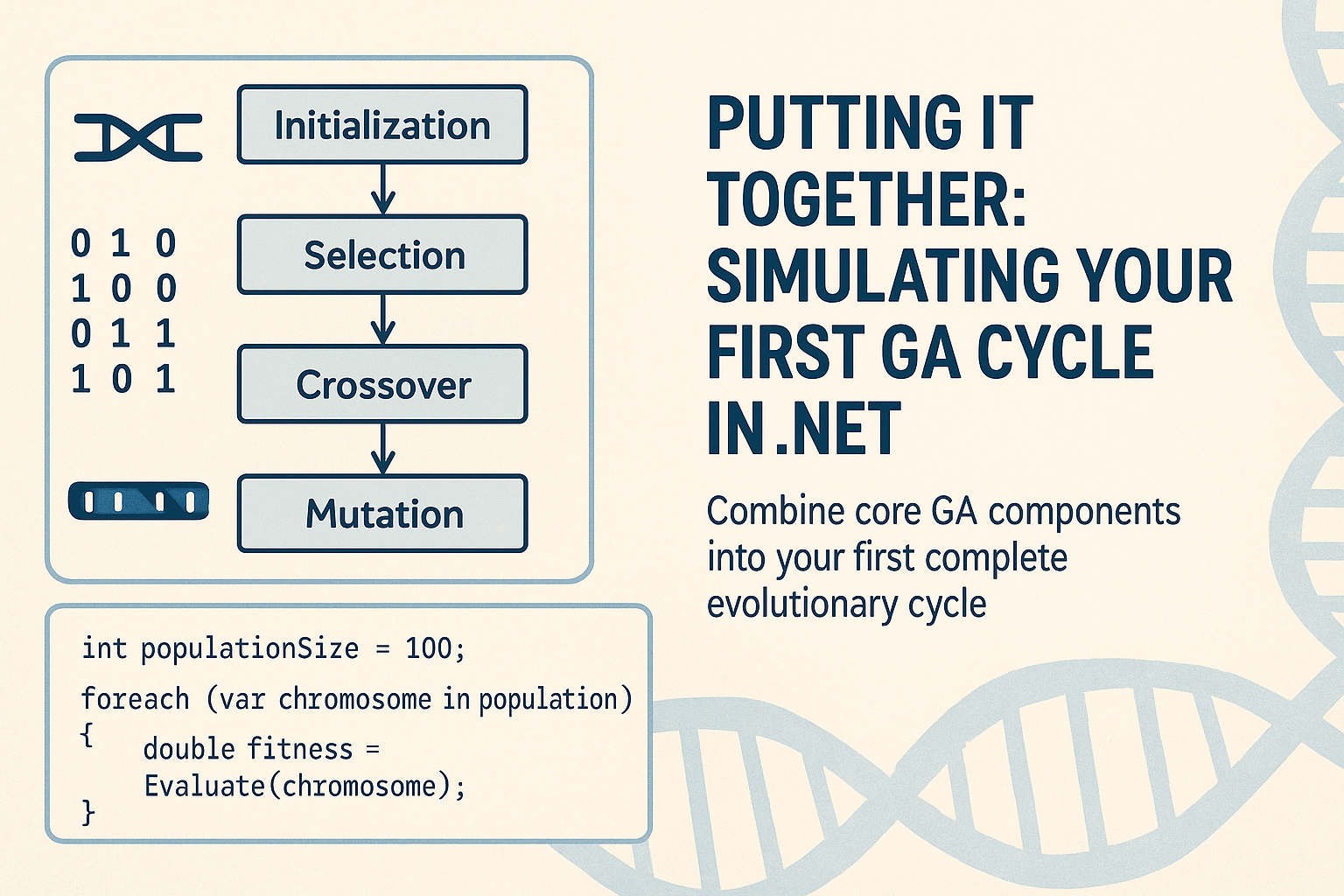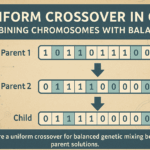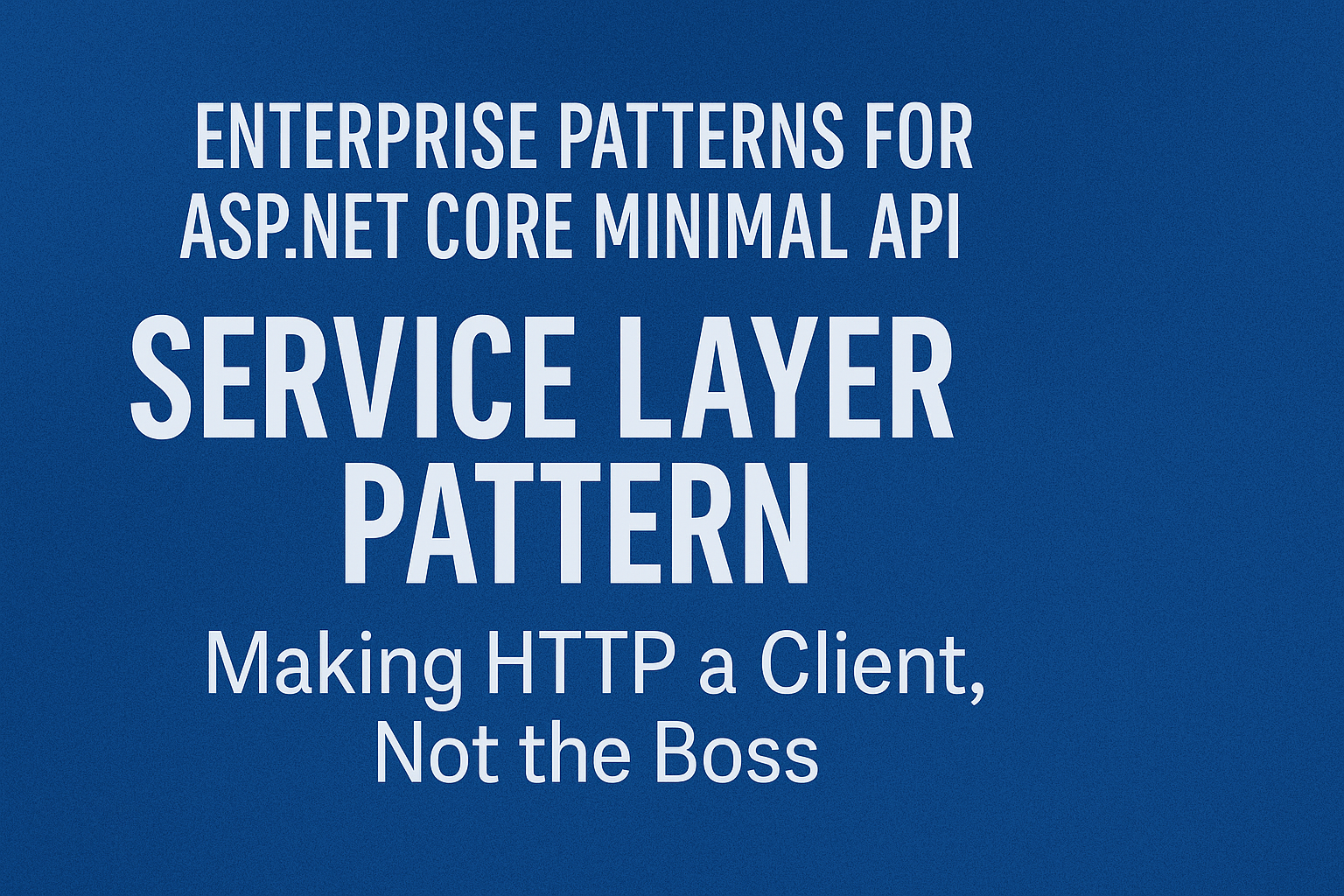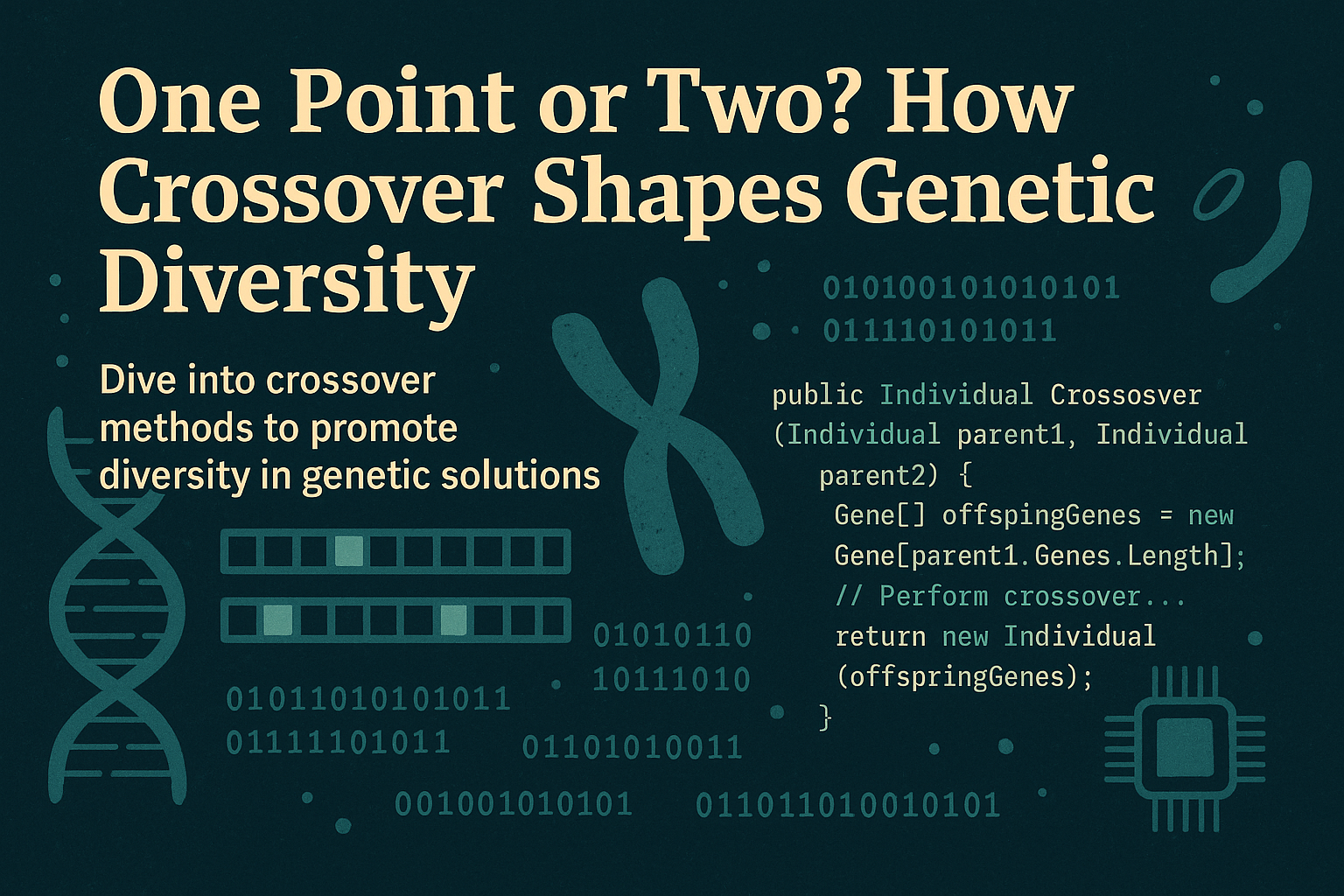
Day 8: One Point or Two? How Crossover Shapes Genetic Diversity
- Chris Woodruff
- June 17, 2025
- Genetic Algorithms
- .NET, ai, C#, dotnet, genetic algorithms, programming
- 0 Comments
In the evolutionary process, crossover is the mechanism by which parents pass on their traits to offspring. In genetic algorithms, crossover plays the same role, combining genes from two parent chromosomes to produce new solutions. How you implement crossover significantly impacts the algorithm’s ability to explore the search space and avoid premature convergence.
Today, we dive into crossover methods in C#, comparing one-point, two-point, and uniform crossover, and how each influences genetic diversity.
The Role of Crossover
Crossover mimics sexual reproduction. It selects two parents and mixes their genes to create one or more children. While mutation introduces random variations, crossover is responsible for combining high-quality traits to form even better solutions, potentially.
Practical crossover promotes diversity without destroying structure. If done poorly, it can dilute strong solutions or lead to population stagnation.
One-Point Crossover
One-point crossover selects a single cut point in the gene sequence. The child inherits genes from the first parent up to the cut point, and from the second parent beyond it.
Implementation in C#
public Chromosome OnePointCrossover(Chromosome other)
{
int length = Genes.Length;
int crossoverPoint = Random.Shared.Next(1, length - 1);
char[] childGenes = new char[length];
for (int i = 0; i < length; i++)
{
childGenes[i] = i < crossoverPoint ? Genes[i] : other.Genes[i];
}
return new Chromosome(childGenes);
}
Benefits
- Maintains order and structure from both parents
- Simple and efficient
Drawbacks
- Consistently uses the same type of split
- Can bias inheritance patterns over time
Two-Point Crossover
Two-point crossover uses two cut points and swaps the gene segments between them.
Implementation
public Chromosome TwoPointCrossover(Chromosome other)
{
int length = Genes.Length;
int point1 = Random.Shared.Next(0, length - 2);
int point2 = Random.Shared.Next(point1 + 1, length);
char[] childGenes = new char[length];
for (int i = 0; i < length; i++)
{
if (i < point1 || i >= point2)
childGenes[i] = Genes[i];
else
childGenes[i] = other.Genes[i];
}
return new Chromosome(childGenes);
}
Benefits
- More variation than one-point crossover
- Preserves the middle sections from the second parent
Drawbacks
- More complex to implement
- Can disrupt functional building blocks in some representations
Uniform Crossover (Preview)
In uniform crossover, each gene is chosen randomly from either parent with a fixed probability. We’ll dive deeper into this method in tomorrow’s post.
Choosing a Strategy
There is no one-size-fits-all crossover. The right choice depends on your problem space:
| Method | Strengths | Best For |
|---|---|---|
| One-Point | Fast, preserves sequences | Problems where gene order matters |
| Two-Point | Greater mixing, more exploration | Complex encoding schemes |
| Uniform | Maximum mixing, high diversity | Binary or loosely-ordered genes |
In most GA implementations, one-point or two-point crossover is the starting point. If your population stagnates or converges prematurely, switching to a different crossover method is often a good first step.
Up Next
Tomorrow, we’ll explore uniform crossover in depth and implement it in C#. It’s a powerful alternative that doesn’t rely on fixed breakpoints, and it brings high diversity into your gene pool.
Understanding crossover is the key to generating smarter offspring. Let’s evolve intelligently.
